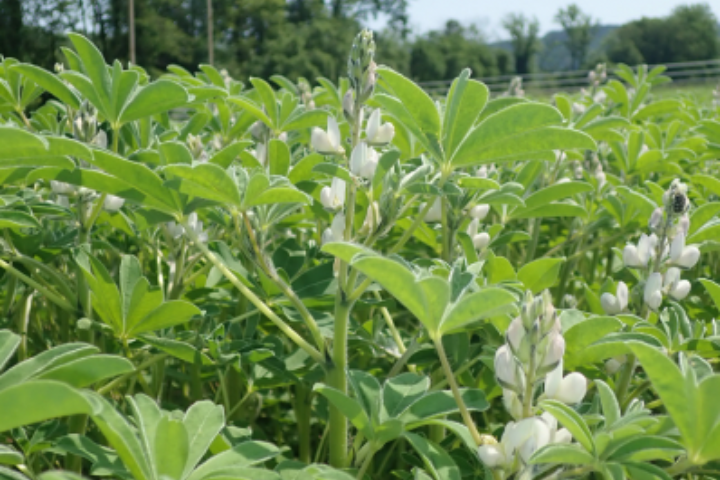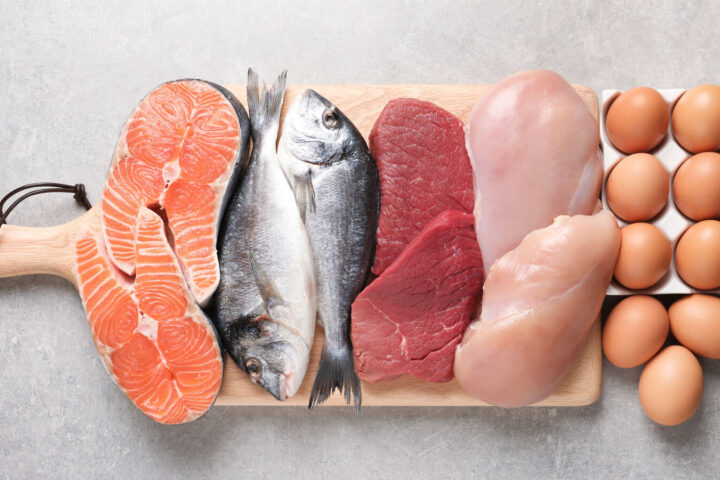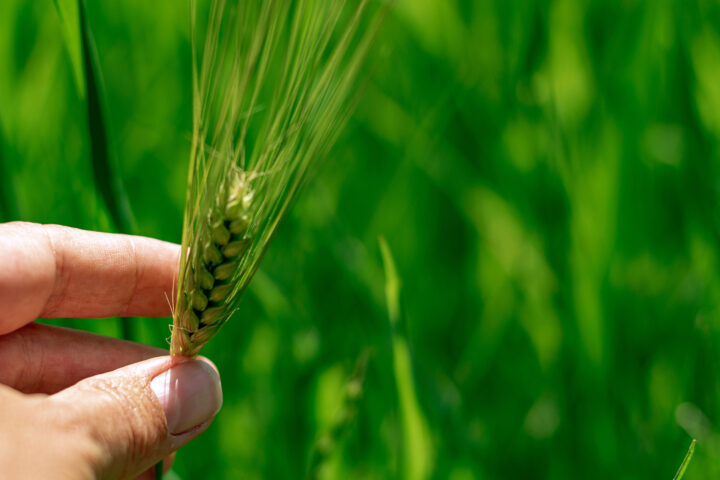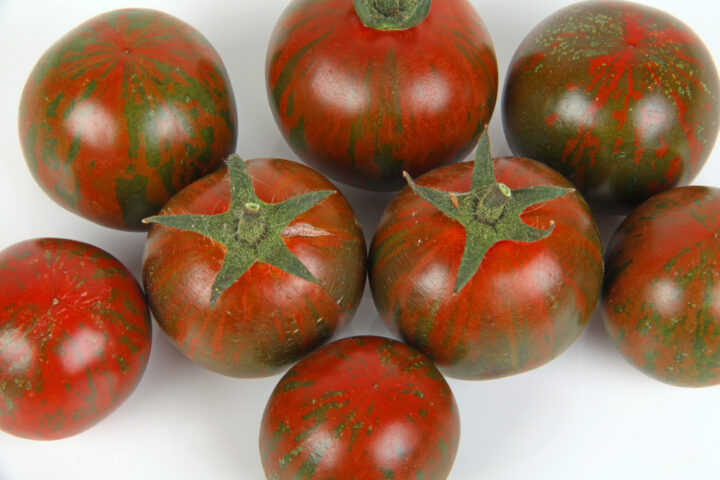
Double Benefit: Electricity and Nutrition from the Land
The demand for both food and electricity is set to increase dramatically in future. Concurrently, there will be less free space available. So why don’t we use arable land to produce both food and electricity at the same time? This would be possible using solar panels that produce electricity several meters above the ground. Plants that need shady conditions could grow beneath them.
Tuesday, August 9, 2022
The worldwide population growth is causing increasing demand for food. At the same time, however, more electricity will also be needed. This is all the more true for countries that want to break away from fossil fuels in the foreseeable future. Less gas and oil – i.e. decarbonization – means an increase in electrification. Against the background of the fact that usable land will also be scarcer, it makes sense to consider multiple use of agricultural land. According to the “Tages-Anzeiger” newspaper, one option in this area would be agrivoltaics.
Twofold Use
The idea: Solar panels can be installed on agricultural land that provide electricity and do not prevent plants from growing underneath at the same time. There are various options for setting up the panels. For example, three to five meters above the field. This means that there is still enough space for agricultural machinery to go underneath them. In pastures, cows could also graze under the panels. In the hot summer months they would have sufficient shade. Switzerland, with its numerous pastures, would be the perfect place to do this. However, it is also conceivable that the panels could be installed standing vertically with several meters of space between them. The challenge is to position the photovoltaic systems in such a way as to maximize both harvests and electricity production. It would also be conceivable to have mobile modules that could adjust to the sunlight according to the time of year. This would mean that in winter, when certain plants need less sun or the fields are fallow, electricity production could be maximized. In summer, the panels can be set up so that sufficient light gets to the plants.
Increasing Productivity
The idea of agrivoltaics improves land use efficiency. In certain cases, agricultural productivity can even be increased with solar panels. “There are examples where the productivity of agriculture has increased, in spite of the partial shade caused by the photovoltaic systems, because the micro-climate under the solar panels can be adjusted to the plants in a targeted manner,” Jürg Rohrer, Professor of Ecological Engineering at Zurich University of Applied Sciences (ZUAS) in Wädenswil tells the “Tages-Anzeiger”.
Protection against Wind and Weather
The solar panels also protect the crops from wind and weather. Depending on the design, the systems provide protection from heat, hail, heavy rail or even frost. This could even make the technology attractive for winegrowers, who regularly have to battle hail and frost. Against the background of climate change with the increasing likelihood of extreme weather, agrivoltaics could be a way to mitigate the consequences, according to Rohrer in the “Tages-Anzeiger”. During a trial conducted by ZUAS in Wädenswil, researchers observed that in winter more lamb’s lettuce actually grew under the panels than in fields without panels. According to Rohrer, this is due to the fact that the temperature under the panels could be kept higher.
Switzerland Lagging Behind
In countries such as the Netherlands, France, Germany and the USA, agrivoltaics systems of various types are already in use. In some cases, for example in Germany, they are even state-funded. In spite of the huge potential of agrivoltaics, to date it has not been permitted in Switzerland. However, this could change in future thanks to the government’s amendment of the Raumplanungsverordnung [Land-use Planning Ordinance]. In actual fact, however, agrivoltaics systems may initially only be used in very restricted areas. This is because, among other things, there are clashes with landscape and nature conservation. But that is not the only problem. The government is also responsible for the shabby treatment of agrivoltaics according to Christian Wolf, Sales Manager at MBR Solar. According to the Federal Office for Agriculture (FOAG), systems of this kind can only be built if it can be proved that they offer added value for agriculture. This must be greater than the added value of energy production. “This means that agrivoltaics can actually only be considered for special crops such as berries. The contribution margin (CM) is present there, and extra agricultural yield can be achieved,” Wolf tells the “BauernZeitung” farming newspaper. In spite of huge potential, it is therefore possible that agrivoltaics systems will not be able to be installed with pip and stone fruits. This is because the coverage ratio there is three to four times lower. Wolf finds the FOAG’s position incomprehensible.
Gaining Valuable Experience
According to David Stickelberger from Swiss Solar, only sites close to residential areas are currently considered for agrivoltaics. This is because in other areas it would be necessary to lay long, expensive power lines. Alongside the problems with regulation, however, there is still a significant need for research in this area. This is because there has been no final clarification of how to optimize electricity production and food production in the same area. According to Jürg Rohrer, it is now important to set up a few large systems to gain experience. He says, “there is simply nothing better than gaining practical experience, otherwise you can often be talking at cross purposes.”
Related articles

A Superfood with Benefits and Challenges
Sweet lupin is Biovision’s “Superfood of the Year 2026.” It delivers high protein content, improves soils and supports biodiversity. Yet a closer look at agricultural practice shows that without breeding, crop protection and innovation, even this superfood remains a challenging crop.

Sales bans due to PFAS: Should we be worried?
After spectacular sales bans on fish and meat due to PFAS contamination, consumers are asking themselves: How dangerous are these substances really – and what can still be placed in the shopping basket without concern?

How German Experts View New Breeding Techniques
In hardly any other country is the idyllic image of organic farming cultivated in the public sphere as carefully as in Germany. Naturalness and rural authenticity are powerful mental refuges for many Germans. Against this backdrop, it is hardly surprising that resistance to new breeding techniques is strong – and that ignorance about the realities of organic farming sometimes appears almost deliberate.

Why consumers accept gene-edited foods on their plates
Acceptance of gene-edited foods increases when the tangible benefits for consumers are easy to understand. A recent study by the Center for Food Integrity (CFI), conducted in collaboration with FMI – The Food Industry Association, shows that consumers evaluate technologies such as genome editing positively when they recognize clear advantages for health, the environment, or food security.

